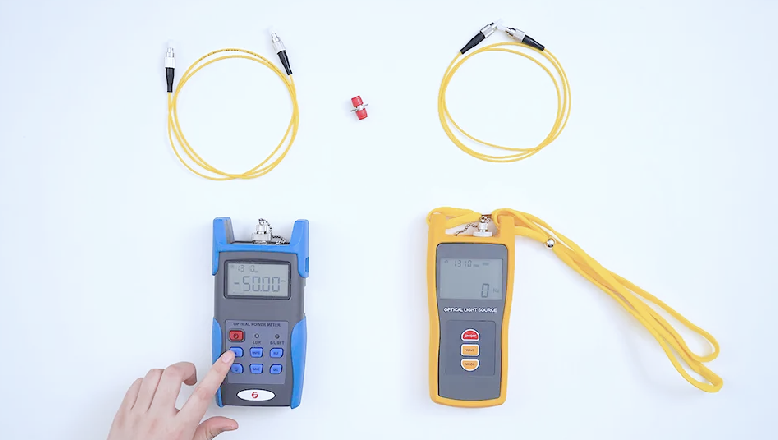OFDA Tools for Improved Fibre Performance and Quality Control
OFDA Tools for Improved Fibre Performance and Quality Control
Blog Article
Necessary Features to Search For in Optical Fibre Screening Tools
When evaluating optical fiber testing devices, a number of essential features necessitate mindful factor to consider to make certain optimum efficiency and integrity. Compatibility with existing sector requirements enhances capability, while sophisticated dimension abilities, consisting of TDR and OTDR testing, deal important understandings right into network honesty. Understanding these features will certainly drop light on how to select the appropriate tools for your specific needs.
Precision and Precision
Precision and accuracy are essential criteria in the assessment of optical fibre testing tools. These two characteristics guarantee that measurements mirror truth efficiency of fiber optic systems, which is essential for efficient network installment, upkeep, and troubleshooting. Precision refers to the nearness of a measured value to the actual worth, while accuracy signifies the repeatability of measurements under unmodified conditions.
When choosing optical fiber testing devices, it is necessary to think about tools that give high precision and precision to reduce mistakes in information analysis. Tools such as optical time-domain reflectometers (OTDRs) and power meters must have calibration devices to make certain regular performance over time. In addition, the specifications given by manufacturers should information the equipment's measurement uncertainty, which directly impacts the integrity of examination outcomes.
In addition, the efficiency of optical fiber screening devices can be affected by ecological variables, such as temperature and moisture. Selecting tools made to reduce these variables will enhance dimension integrity. To conclude, investing in optical fiber testing devices with robust accuracy and precision attributes is fundamental for keeping ideal network performance and guaranteeing the integrity of fiber optic interactions.

User-Friendly Interface
The effectiveness of optical fibre screening tools is not exclusively determined by its accuracy and accuracy; an easy to use user interface plays a substantial function in enhancing operational efficiency. A properly designed user interface simplifies the communication in between the service technician and the equipment, allowing for a more user-friendly understanding of complex features.
Trick functions of a straightforward user interface include clear navigation food selections, rational formats, and quickly available controls. These elements allow specialists to perform examinations swiftly without comprehensive training, lowering the probability of customer error - ofda. Visual indicators such as development bars, informs, and graphical representations of data can substantially improve the individual experience by providing instant responses on the screening process.
Additionally, customizable setups can additionally simplify procedures by permitting users to adjust parameters according to certain screening demands. This versatility not only conserves time yet likewise ensures that the equipment satisfies diverse application demands.
Integrating aid attributes, such as tooltips and detailed handbooks, into the interface can better empower individuals, promoting self-sufficiency and self-confidence in operating the tools. Inevitably, an user-friendly interface is essential for making best use of the capacity of optical fiber testing tools, causing more effective and efficient testing outcomes.
Mobility and Resilience
Mobility and durability are crucial features of optical fiber screening devices, guaranteeing that it can hold up against the roughness of various environments while continuing to be simple to transportation. Professionals commonly operate in varied setups, from telecoms hubs to remote setups, making it important that screening devices are light-weight and portable (ofda). Equipment made with transportability in mind normally includes ergonomic handles and instances that promote easy movement, hence improving operational effectiveness on-site
Toughness is equally vital, as optical fibre testing devices is frequently exposed to rough problems, consisting of temperature variations, moisture, and physical influences. Instruments built with rugged materials such as enhanced plastics or steel real estates are better matched for these atmospheres, lessening the risk of damage during use and transport. Additionally, devices with water and dust resistance scores, such as IP rankings, makes certain trusted performance in challenging problems.
Compatibility With Standards
Making sure compatibility view website with market standards is important for optical fiber screening equipment, as it directly influences the reliability and legitimacy of test results. Optical fibre networks are subject to rigid efficiency criteria developed by various organizations, consisting of the Telecommunications Market Organization (TIA) and the International Electrotechnical Compensation (IEC) Examining tools has to abide by these standards to make sure that dimensions correspond and similar throughout different systems and environments.
When picking optical fibre testing equipment, individuals need to verify that the gadget meets redirected here appropriate requirements pertinent to their certain application, such as those relevant to attenuation, transmission capacity, and crosstalk. Devices that is certified with well established requirements not just assists in accomplishing accurate results but also helps with interoperability among devices from different producers.
In addition, compatibility with standards makes certain that the equipment can be utilized in governing conformity scenarios, which is vital for jobs in fields such as telecommunications, aerospace, and army applications. For that reason, purchasing optical fibre screening equipment that straightens with current industry standards is an essential element of preserving quality control and attaining optimal network performance.
Advanced Measurement Abilities
Advanced dimension capacities are a defining feature of modern-day optical fiber screening devices, enabling extensive evaluation of network efficiency. These capabilities ensure that specialists can evaluate essential criteria such as signal loss, diffusion, and transmission capacity, which are vital for preserving optimal communication performance.
One trick facet is the ability to conduct time-domain reflectometry (TDR) and optical time-domain reflectometry (OTDR) tests. These strategies enable individuals to recognize faults, measure the length of fibers, and identify the place of defects with impressive precision - ofda. Moreover, innovative equipment often consists of the capacity to determine optical power levels, helping to analyze the total health and wellness of the network and make certain conformity with the needed specifications.
In addition, some screening tools offer sophisticated algorithms for real-time evaluation, enabling quicker medical diagnosis and troubleshooting. In final thought, investing in optical fiber testing devices with advanced measurement capabilities is crucial for making certain network dependability and performance in today's demanding telecommunications landscape.
Conclusion

Report this page